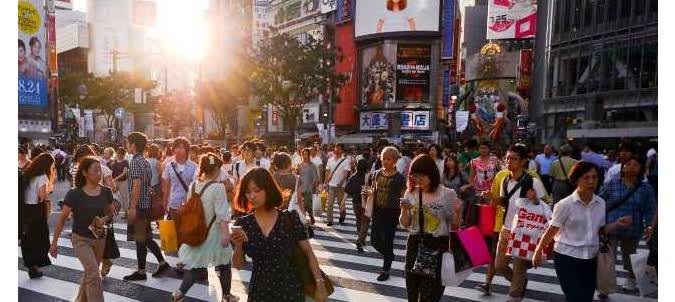Huge worker shortage looms in Japan

Japan’s labour market may be at an inflection point as the nation braces for a shortfall of millions of workers, the rise of generative AI and risks to economic security.
The spotlight is increasingly on the sustainability of wage growth, which has been accelerating at the fastest pace in three decades. Prime Minister Fumio Kishida now wants to see pay hikes that will be “several percentage points higher” than the country’s inflation rate.
Japan’s widespread seniority-based employment system, low labour productivity, and workers’ reluctance to hop from one job to another have been among the factors behind its tepid wage growth for years.
In the short term, labour shortages are evident in the pandemic-hit services sector, with labour-intensive areas like nursing care and construction already struggling.
A potential crisis looms over the logistics industry as the planned imposition of a stricter legal cap on overtime hours, as part of labour market reforms, is raising concerns about an acute driver shortage.
Private-sector surveys point to more severe labour shortages for decades to come, with one of them estimating a shortfall of over 11 million workers by 2040. The nation had around 67 million workers as of July.
The government is getting more serious about reforming the labour market, underscoring the need for reskilling the workforce, shifting away from seniority-based employment and boosting labour mobility as Kishida eyes setting in motion a positive cycle of economic growth and wealth redistribution.
“If more people move from one company to another, more companies will offer higher pay to get young, skilled workers,” said Takuya Hoshino, a senior economist at Dai-ichi Life Research Institute.
“The government wants reskilling programs to facilitate more job-hopping but there’s another side to it as well. There are also companies offering such opportunities to their own workers, especially younger ones who want to brush up their skills, fearing they will lose such workers to other firms,” he added.
Over the past decade or so, Japan has seen more women and elderly people join the workforce. It has opened its doors to more foreign workers, albeit slowly, but experts question whether Japan can compete with other nations where workers can get higher pay.
While some sectors have been reaping the benefits of automation and AI, and companies have plans to ramp up their investment in these fields, uncertainty remains over the long-term impact on the labour market.
As an effort to protect national security, Japan is also aiming to revitalize the once-competitive chip sector with the help of giants like Taiwan Semiconductor Manufacturing Co., to prevent a repeat of supply disruptions caused by the COVID-19 pandemic and China’s increasing clout.
The number of professional engineers would have to increase sharply for Japan to double its market share in the sector to 15 percent in 2035, according to an estimate by Mitsubishi Research Institute.
The institute estimates 9.7 million jobs will be lost by 2035 due to the effects of digitalization, including AI. But labour will still be in short supply that year as a result of a push for green and digital transformations and efforts to boost the nation’s semiconductor industry.
One challenge for the broader Japanese labour market is that the percentage of workers with non-routine, or “creative,” tasks in relation to routine ones is lower than in countries like the United States and Britain, the institute said, expecting a severe labor shortage for professional technical occupations.
“It’s important to think about how we can achieve a transition and see more people engaged in non-routine tasks” through reskilling or upskilling, said Masashi Santo, chief of human resource research at Mitsubishi Research Institute, adding that companies should more clearly specify what types of skills are required.
More skilled workers can boost Japan’s labour productivity and will be positive for the economy, economists say. Its labour productivity was the lowest among the Group of Seven advanced economies in 2021.
For now, accelerating inflation driven by higher import costs has been prodding companies to hike wages, while AI may reduce human workloads, boost efficiency and cut labor costs.
The International Labour Organization says generative AI, which is neither inherently good nor bad, will “augment” rather than destroy jobs. The U.N. agency is calling for governments and others to design the right policies to ensure a smooth transition because costs to affected workers will be “brutal.”
“Japan is moving in the right direction in that it is moving away from its unique seniority-based employment and promoting reskilling programs. But there are limits to what government policy can do. The onus is on companies and workers,” said Hoshino of Dai-ichi Life.



